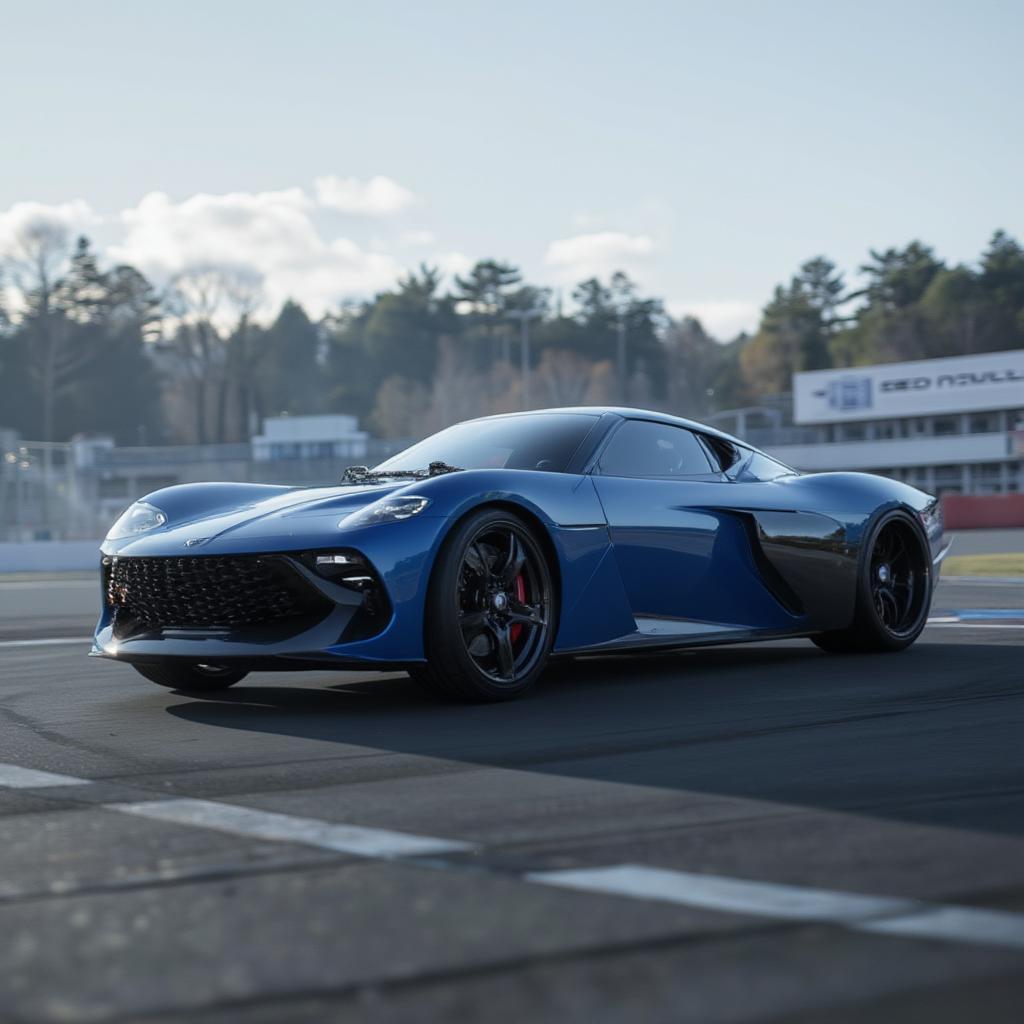Asian Supercars: The Rise of Eastern Automotive Excellence

The Asian supercar market is experiencing a period of unprecedented growth, challenging the established dominance of European manufacturers. From sleek Japanese speed demons to cutting-edge Chinese hypercars, Asia’s automotive industry is producing high-performance vehicles that are turning heads and capturing the imagination of enthusiasts worldwide. This dynamic shift is fueled by advanced technology, innovative design, and a growing demand for homegrown supercars that reflect Asia’s unique cultural identity.
The Dawn of a New Era: Japanese Automotive Prowess
Japan has long been a powerhouse in the automotive world, renowned for its reliability, efficiency, and technological innovation. This legacy has paved the way for the development of some truly iconic supercars. Nissan’s legendary GT-R, affectionately known as “Godzilla,” continues to push boundaries with its blistering performance and advanced all-wheel-drive system. Honda’s NSX, a technological marvel in its own right, showcases the country’s expertise in hybrid technology and lightweight construction. Lexus, Toyota’s luxury division, entered the supercar arena with the LFA, a limited-production masterpiece that combined a screaming V10 engine with a carbon fiber-intensive chassis. These vehicles are not just fast; they represent a relentless pursuit of perfection and a commitment to pushing the limits of automotive engineering.
China’s Automotive Ambition: Speeding into the Future
China, an emerging giant in the global automotive landscape, is rapidly developing its own supercar scene. Companies like NIO and Techrules are leading the charge, developing electric and hybrid hypercars that boast incredible performance figures and cutting-edge technology. These brands are not just building fast cars; they are investing heavily in research and development, pushing the boundaries of electric vehicle technology and challenging conventional notions of what a supercar can be. China’s automotive ambition is clear: to become a global leader in the production of high-performance vehicles that rival the best in the world.
Beyond the Big Players: Emerging Supercar Scenes
While Japan and China are at the forefront of the Asian supercar revolution, other countries are also making their mark. South Korea’s Hyundai has demonstrated its performance credentials with the impressive Genesis Coupe, showcasing the country’s growing automotive capabilities. Meanwhile, smaller manufacturers across Southeast Asia are developing bespoke supercars that cater to a niche market of discerning enthusiasts. This burgeoning ecosystem of innovation and design is further evidence of Asia’s growing influence on the global supercar stage.
What Defines an Asian Supercar?
What sets Asian Supercars apart from their European counterparts? Is it simply a matter of geography? The answer is more nuanced. Asian supercars often incorporate cutting-edge technology, particularly in areas like hybrid powertrains and advanced electronics. They frequently prioritize precision engineering and meticulous attention to detail, reflecting a cultural emphasis on craftsmanship and quality. Moreover, Asian supercars often draw inspiration from their respective countries’ unique design aesthetics, resulting in vehicles that are both visually striking and culturally significant.
The Future of Asian Supercars: Electrification and Innovation
The future of Asian supercars is undeniably electric. With countries like China heavily investing in electric vehicle infrastructure and technology, it’s only natural that this trend will shape the development of high-performance vehicles. We can expect to see more hybrid and fully electric supercars emerge from Asia, pushing the boundaries of performance and efficiency. Furthermore, advancements in areas like autonomous driving and artificial intelligence will likely play a significant role in shaping the next generation of Asian supercars.
Are Asian Supercars More Reliable Than Their European Counterparts?
One common question among enthusiasts is whether Asian supercars are more reliable than their European counterparts. While generalizations are difficult, Asian manufacturers have a long-standing reputation for building reliable vehicles. This reputation extends to their supercars, which often benefit from rigorous quality control processes and a focus on durability. However, all supercars require specialized maintenance and care, regardless of their origin.

How Much Does an Asian Supercar Cost?
The price of an Asian supercar can vary significantly depending on the make, model, and specifications. Entry-level models might start in the six-figure range, while limited-production hypercars can command prices well into the millions. Factors like performance, technology, and exclusivity all contribute to the final price tag.
The Impact of Asian Supercars on the Global Automotive Landscape
The rise of Asian supercars has had a profound impact on the global automotive landscape. These vehicles have challenged the established order, forcing European manufacturers to innovate and adapt. They have also broadened the appeal of supercars, introducing new design aesthetics and technological innovations. The Asian supercar market is not just a regional phenomenon; it is a global force that is shaping the future of the automotive industry.
“The emergence of Asian supercars signifies a major shift in the automotive world. These vehicles represent a new era of innovation and design, challenging traditional notions of performance and luxury.” – Dr. Kenji Tanaka, Automotive Engineering Professor, University of Tokyo.
“Asian manufacturers are leveraging their technological expertise to create supercars that are not only fast but also incredibly advanced. This is driving the entire industry forward.” – Ms. Li Wei, Automotive Analyst, Shanghai Automotive Research Institute.
In conclusion, Asian supercars are rewriting the rules of the game. They represent a fusion of cutting-edge technology, innovative design, and a cultural spirit that is reshaping the global automotive landscape. From the legendary streets of Tokyo to the bustling metropolis of Shanghai, Asia is the new epicenter of supercar innovation, and the world is taking notice.




